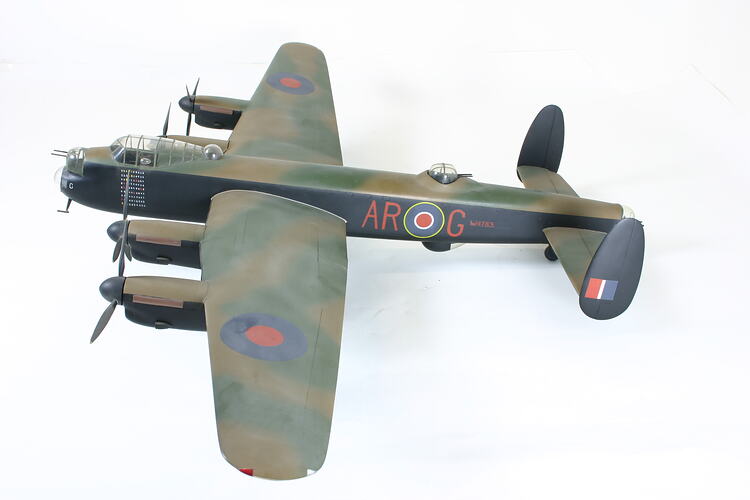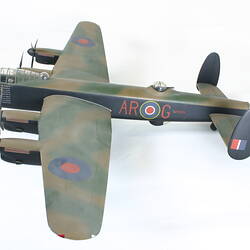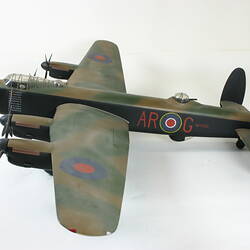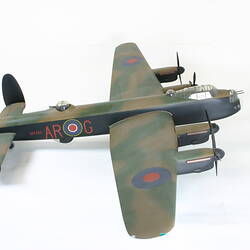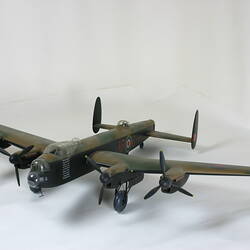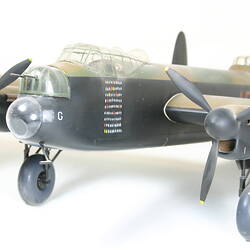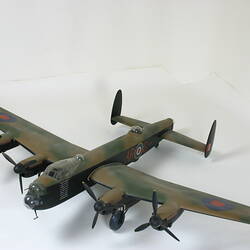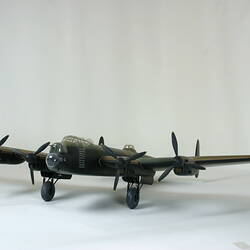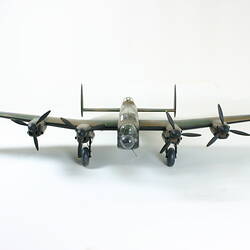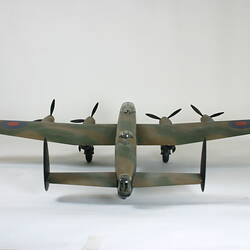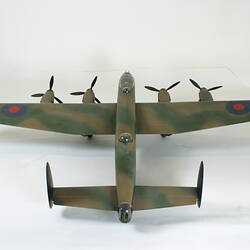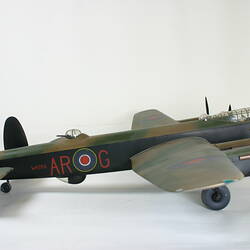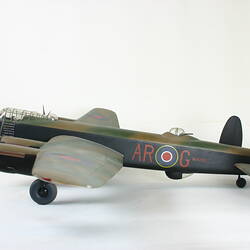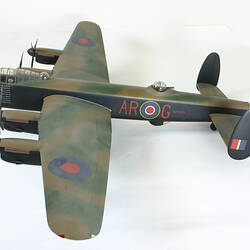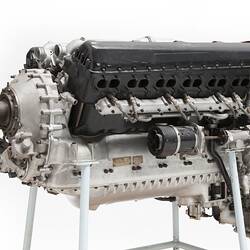Summary
Aircraft History
One of the most important aircraft types of World War II, the Avro Lancaster was developed from one of the least successful bombers produced by A.V. Roe Limited, the Avro Manchester. The twin-engined Manchester, first flown in 1939 was prone to problems with its Rolls-Royce Vulture engines which frequently seized and caught fire as a result of poor lubrication. A decision to convert a Manchester with four Rolls-Royce Merlin engines and longer span wings as the Manchester III in 1941 was an immediate success and this version was put into large scale production as the Lancaster. The Lancaster entered operational service in 1942 and soon became the most numerous bomber type used in RAF Bomber Command's night bombing offensive against Germany. In addition to the Australians who crewed Lancasters in Royal Air Force squadrons, three RAAF squadrons in the UK (460, 463 & 467) were equipped with Lancasters.
Model History
This 1:32 scale model is painted to represent the well-known Lancaster Mk. 1, W4783 'G for George' operated by 460 Squadron RAAF from Binbrook in the UK. This aircraft flew 90 operations over occupied Europe in 1942-43 and was flown to Australia and toured in 1944 to raise money for the Third Victory Loan. It became part of the Australian War Memorial collection after the war and was displayed at the AWM in Canberra from 1955 to 1999. After a major restoration was completed in 2006, G for George is again on display at the Memorial's Federation Hall. This model was commissioned by the Museum and built by Dagra Models in the UK. It was displayed at the Jubilee of Flight exhibition at the former Science Museum of Victoria in 1953.
More Information
-
Collecting Areas
-
Acquisition Information
Purchase
-
Modelmaker
-
Manufacturer of Item Modelled
-
Brand Names
-
Classification
Air transport, Aircraft, Model propeller aircraft - military
-
Category
-
Discipline
-
Type of item
-
Model Scale
1:32
-
Keywords
Aeroplanes, Bombers, Military Aircraft, Model Aeroplanes, Scale Models, Wars & Conflicts, World War II, 1939-1945
